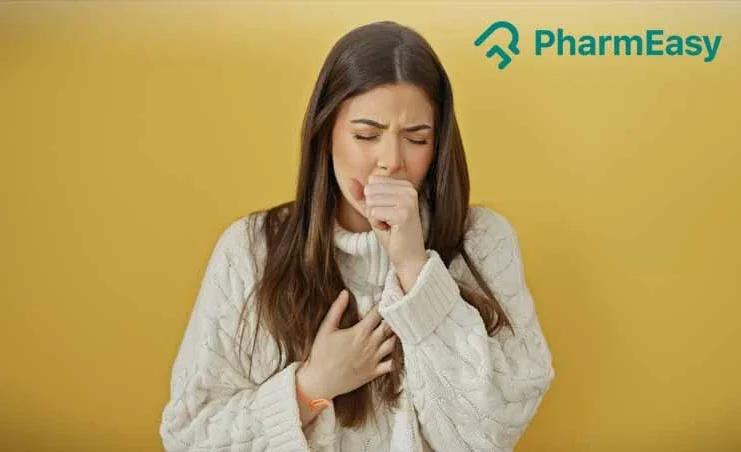How Long Does a Flu Last and Ways to Manage Them
By Dr. Vishesh Bharucha +2 more

Get,

to manage your symptom
Get your,


4 Cr+ families
benefitted

OTP sent to 9988776655



You’ve successfully subscribed to receive
doctor-approved tips on
Whatsapp

Get ready to feel your best.

Hi There,
Download the PharmEasy App now!!


Register to Avail the Offer
Send OTPBy continuing, you agree with our Privacy Policy and Terms and Conditions

Hi There,
Sign up on PharmEasy now!!
Trusted by 4 crore+ families

OTP sent to 9988776655



You have unlocked 25% off on medicines




Code: NU25
By Dr. Vishesh Bharucha +2 more
Table of Contents
Influenza or flu is one of the most common and unpleasant illnesses encountered by humans. And when you catch it, one of the first questions that is likely to come to your mind is “how long will this last?” Actually, flu symptoms such as the abrupt onset of high fever, dry cough, and headache, along with muscle pain, are so distressing that you just want the illness to end as quickly as possible. But how? Well, the solutions are specific to your health, and we’ll have a look at these in this blog.
The flu, commonly known as influenza, primarily affects the respiratory tract but is not limited to the nose, throat, and lungs. It also causes systemic symptoms like fever, muscle pain and malaise, which are mainly due to the immune response to infection1. Influenza viruses are the cause of flu. These viruses can be divided into four types: A, B, C, and D.

When seasonal influenza viruses A (subtypes H1N1, H3N2, etc.) or influenza B lineages (Victoria and Yamagata) infect people, the illness is referred to as seasonal influenza2. Globally, annual influenza epidemics of varying intensity usually happen during colder months in temperate regions3. While mostly it resolves soon, in some cases the disease can prolong and cause certain complications.
The main ways by which influenza is transferred from person to person are through direct contact with respiratory secretions and large droplets4. The incubation period of influenza, i.e., the time from infection to development of symptoms, is about 1 to 4 days5.
It is important to note that viral shedding (i.e., the virus is shed in nasal and oropharyngeal secretions, which can spread through coughing and sneezing) can take place one day prior to the beginning of symptoms, peak in the first 3 – 5 days, and continue up to seven days after6,7,8. Thus, you can spread the infection even before and after the symptoms show. Viral shedding may be prolonged to 10 days or more in young children9,10, immunocompromised individuals11,15, and severely ill individuals.
Immunity to influenza immunity is a host characteristic and determines an individual’s vulnerability to infection8. Young children may lack immunity, while older adults may have some cross-protection from prior exposures but remain at higher risk of severe disease.
Depending on age, comorbidities, vaccination status, and innate immunity to the virus, the clinical presentation of influenza ranges between mild to severe.1 Influenza symptoms include loss of appetite, headache, acute myalgia (muscle pain), fever, chills, and malaise. In severe cases, there may be respiratory distress, hypoxia, complications (e.g., pneumonia, encephalopathy, myocarditis), and hospital requirement.
Usually, the patient gets a high-grade fever in the first few days, and then the fever progressively goes down on the second and third days. However, it can continue for four to eight days. During the long recovery phase, that is the weeks that follow, the patient may have complaints of dry cough and malaise16.
Thus, majority symptoms resolve in three to seven days, though fatigue and cough can linger longer for 2 weeks more. For high-risk individuals (elderly, individuals with impaired immune system), the illness may last longer17,18.
Individuals at risk of severe disease or complications from influenza include the following groups22:
In a major research assessing the clinical presentation of influenza in children, nearly all (95%) had fever, while cough (77%) and rhinitis (78%) were also rather prevalent. However, headache (26%) and myalgia (7%) were substantially less common19. Younger children have not yet developed immunity to a wide variety of circulating seasonal influenza strains because they have not been exposed to influenza frequently. As a result, they are more prone to get frequent disease20. Additionally, they may develop gastro-intestinal symptoms (vomiting, diarrhoea, abdominal pain, and loss of appetite) and have higher fevers (often linked to febrile convulsions)21. Children often get high fevers and complications (e.g., febrile seizures, otitis media), but not necessarily more severe disease overall.
Thus, it can be summarized that symptoms typically last till a week, but fatigue and malaise may linger longer for a week or more. However, this duration is prolonged in the above-mentioned high-risk groups, who can have more severe disease and children who are prone to frequent infections.
The flu is contagious means it can spread to others due to ongoing viral shedding in the infected individual. Presymptomatic shedding usually occurs about 24 hours before the disease manifests, and patients are typically contagious for 5 to 7 days after onset, while some studies suggest that it may continue till 10 days later23. It should be noted that children, elderly, individuals with weakened immune system, and patients with chronic illnesses may have prolonged periods of shedding and infectiousness17,24.
Flu symptoms might appear suddenly and persist for a few weeks. Following is the normal pattern of a flu episode16:
Thus, improvement in uncomplicated influenza should be noticed in 3 – 7 days. However, fatigue and coughing may last longer for 1 – 2 weeks. If a typical course of flu is accompanied with shortness of breath, then it is not normal. The most common complication in children is otitis media; in adults, bronchitis and secondary bacterial infections are frequent25. Pneumonia is a serious complication, especially in high-risk individuals. Primary viral pneumonia, which is caused by the influenza virus, can occur as a continuum of the acute influenza illness. It is severe, rapidly progressive, but less common. Secondary pneumonia, which occurs after a few days, is a mixed viral and bacterial infection16. Secondary bacterial pneumonia occurs after initial improvement, often due to S. pneumoniae, S. aureus or H. influenzae26. If symptoms persist or newer ones like shortness of breath occur, consult your doctor immediately.

Antivirals are indicated for anyone at high risk of complications, hospitalized patients, or those with severe/progressive disease.
There are two types of anti-influenza medications:
M2 inhibitors (amantadine, rimantadine) are usually not recommended due to widespread resistance in circulating influenza A strains. Peramivir (IV neuraminidase inhibitor)27 and Baloxavir marboxil (cap-dependent endonuclease inhibitor) are now widely used in some regions. These antiviral drugs (e.g., oseltamivir, baloxavir), if started early (within 48 hours of symptom onset), can modestly reduce symptom duration and complications.

In a study28, some herbal remedies were found to be effective against respiratory viruses. These include natural products like licorice roots, elderberry, Echinacea, pomegranate, guava tea, and Bai Shao. Probiotics, zinc, selenium, vitamin C, seaweed extract, yeast-based products, and garlic extract were among the supplements that showed beneficial effects against respiratory viruses. However, evidence for herbal remedies is limited, inconsistent, and often not influenza-specific. Further studies are needed to confirm their use in influenza.
Note: These home remedies should be used after consulting a doctor, especially if you have any pre-existing medical conditions.
If you are in a high-risk group for a serious infection or have any concerns, see a doctor. Get medical help right away if you suffer from any of the following symptoms1:
Influenza Vaccine: Annual immunization against seasonal influenza is the most effective way to avoid influenza and its serious consequences. New vaccinations are created every year to match circulating viruses29 since the influenza virus undergoes antigenic drift, which outpaces the immune system’s ability to defend against novel versions30. The main issue is antigenic drift (minor mutations) and occasional antigenic shift (major changes in Influenza A)21.
Every year, adults and children ≥3 years should receive a single injection of the influenza vaccine (0.5 mL), ideally by October in the northern hemisphere and May in the southern hemisphere16.
For children (6 – 35 months), 0.25 mL (for some vaccines) or 0.5 mL depending on formulation is recommended31.
In addition, to prevent the spread of virus, the following hygiene measures should be taken:
Usually in uncomplicated flu, it takes 3 – 5 days to recover from the symptoms of fever and muscle pain, however, cough and malaise may persist beyond 7 days. People with chronic conditions, elderly individuals, pregnant women and infants <2 years are far more susceptible to flu-related complications. In order to treat the flu, people should rest and avoid exposure during the contagious period. Don’t rush back into your regular activities too soon; instead, be patient and pay attention to your body. To stay healthy during flu season, think about getting vaccinated. The flu vaccine is your best defence against future flu viruses.
Common cold is caused by viral infections (e.g., rhinovirus, coronavirus, adenovirus). While some symptoms of a cold may resemble those of influenza, influenza typically lasts longer than a cold and is more severe. Fever and myalgia are more typical of influenza, but in some cases, severe colds (especially in children) can also cause mild fever.
Pneumonia, myocarditis, myositis and acute respiratory distress syndrome are possible outcomes for just a small portion of influenza patients. Hospitalization and even death may result from these issues. Although those with pre-existing medical illnesses are at a higher risk of complications from influenza, healthy individuals can also experience complications1.
An “enhanced” influenza vaccination is made especially to boost the immune system’s reaction to the vaccine.
It may include:
-a greater quantity of antigen without adjuvant (this refers to high-dose inactivated influenza vaccine (HD-IIV)).
-a regular amount of antigen with an adjuvant (a substance that boosts an immunological response to a vaccine).
Older adults typically receive less protection from influenza vaccinations than younger adults, and they do not react as well to standard-dose influenza vaccinations as younger adults do.Enhanced vaccines do not guarantee complete protection but improve immune response and effectiveness in the ≥65 age group compared to standard vaccines32.
Disclaimer: The information provided here is for educational/awareness purposes only and is not intended to be a substitute for medical treatment by a healthcare professional and should not be relied upon to diagnose or treat any medical condition. The reader should consult a registered medical practitioner to determine the appropriateness of the information and before consuming any medication. PharmEasy does not provide any guarantee or warranty (express or implied) regarding the accuracy, adequacy, completeness, legality, reliability or usefulness of the information; and disclaims any liability arising thereof.
Links and product recommendations in the information provided here are advertisements of third-party products available on the website. PharmEasy does not make any representation on the accuracy or suitability of such products/services. Advertisements do not influence the editorial decisions or content. The information in this blog is subject to change without notice. The authors and administrators reserve the right to modify, add, or remove content without notification. It is your responsibility to review this disclaimer regularly for any changes.
Comments

Leave your comment...
You may also like
Comments